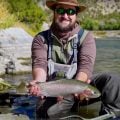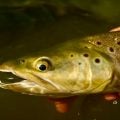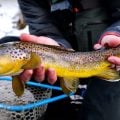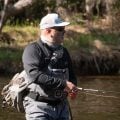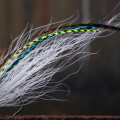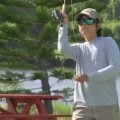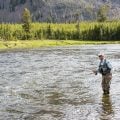Ask MidCurrent: When Should You Use an Emerger Instead of a Dry Fly?
Question: Is an emerger better than a dry fly? I was looking for this article but can’t find it. Can you help me?
—Terry, Southern California (via the Ask MidCurrent form)
Answer: Trout often feed near the surface during insect hatches, but they don’t always target fully emerged adult insects. Many times, rising fish ignore high-floating duns and focus on emergers—insects in the process of hatching. Why? Emergers are usually an easier meal. They linger in the surface film struggling to hatch, making them vulnerable and easy for trout to catch. In fact, if you see trout feeding but they refuse your dry-fly patterns, there’s a good chance they’re feasting on emergers just under the surface.
Emergers: Imitating the Transitional Stage of Insects
An emerger is a fly pattern that imitates an aquatic insect transitioning from its immature form (nymph or pupa) to a winged subadult. Mayflies, caddisflies, midges, and other insects are vulnerable as they emerge at the water’s surface. For example, a mayfly nymph rises to the surface, breaks through its nymphal shuck, and struggles to pull its new wings free. During this brief stage, the insect is half-in and half-out of the water—often stuck in the surface film—and extremely vulnerable to feeding fish. Trout key in on these easy targets. Many caddisflies escape quickly after emerging, any that stall or get “stuck” become a quick snack.
Emerger patterns are designed to mimic these transitional stages when insects are half emerged or struggling. Some patterns even imitate “cripples,” insects that failed to emerge fully and died in the film, which to a trout is just another helpless emerger.
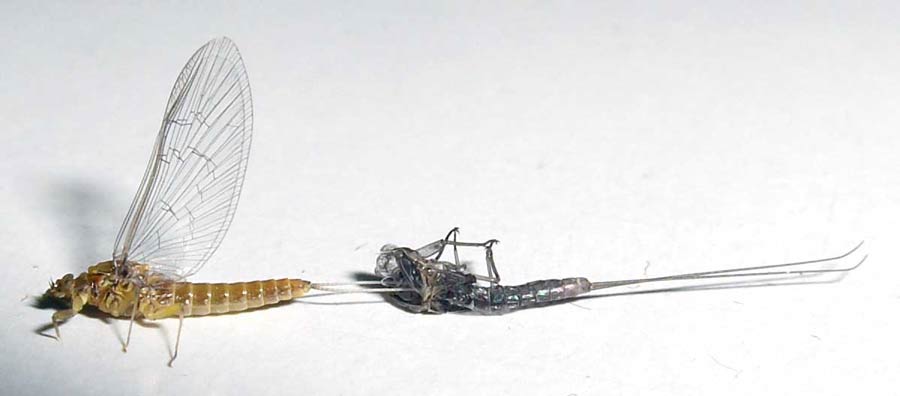
A blue-winged olive dun and the shuck it emerged from. A Photo by Stemonitis. Used via CC BY-SA 2.5
Signs Trout Are Feeding on Emergers (When to Tie One On)
Knowing when to switch to an emerger pattern is key. Look for these cues and conditions:
- Subtle Rise Forms: If trout are rising without loud splashes or visible gulps, they might be taking emergers. Emerger-feeding fish often make dimpled or gentle rises that look like small rings or bulges in the water, with no obvious splash and no air bubbles on the surface. You might see a trout’s dorsal fin or tail tip, but not its nose. Such subtle “sipping” rises are a sure sign that trout are feeding just below the surface on emerging insects.
- Fish Ignore Visible Adults: During a hatch, if you see adult insects (mayflies, caddis, etc.) on the water but trout keep refusing your matching dry fly, they could be focused on the emerger stage. Trout often prefer emergers even when plenty of duns are drifting, because the insects still struggling in the film are easier prey. If trout rise near your dry fly but never take it, try switching to an emerger pattern.
- Hatch Timing: Trout commonly feed on emergers at the beginning of a hatch. Before insects fully hatch in large numbers, trout eagerly intercept nymphs/pupae rising, as well as the first bugs struggling out of their shucks. For example, if you expect a mayfly hatch around 11 am, start fishing emerger patterns about 30 to 60 minutes beforehand. Continue with emergers as long as you see trout feeding on or just under the surface. Many anglers will only switch to traditional dries once trout clearly switch to slurping adults off the top. Similarly, during heavy hatches in slow water, trout may stick to emergers even at the peak of the hatch if the duns are escaping quickly. Pay attention to what stage the fish seem to target.
- Water Conditions & Clarity: Calm, clear water often makes trout extra selective, and emergers can be the ticket in these conditions. In flat pools or slow runs, an emerger or cripple pattern will often out-fish a high-riding dry. Conversely, in fast, riffled water (or when water is very murky/turbid), hatching insects may escape the film faster, or trout might not see tiny emergers as well, so classic bushy dry flies or nymphs might work better. But whenever the water is reasonably clear and a hatch is on, there’s no reason not to try an emerger.
- Time of Day: Insect activity often dictates when trout focus on emergers. Many mayfly species hatch during late morning or afternoon, with trout feeding first on nymphs and emergers, then on duns as the hatch progresses. Evening can bring hatches or spinner falls; trout sipping quietly at dusk are frequently taking emergers or spent insects in the film. Use context: if bugs are in the air but fish aren’t making splashy rises, they’re likely on emergers. Observing a few rises and checking insect evidence (e.g. shucks in the surface film or drifting emergent nymphs) will tell you if an emerger pattern is the right choice.

Clockwise from top left: Bubble Emerger, CDC Mayfly Emerger, Spotlight Caddis Emerger, and Emerger Caddis CDC. All flies courtesy Fulling Mill
Why Emerger Patterns Often Outsmart Selective Trout
Emergers can be deadly in tough fishing situations. Trout choose their food not just by size or species, but by how easy it is to catch. An insect struggling to hatch is easy pickings compared to one that’s about to fly off. Trout seem to know that a bug halfway out of its shuck isn’t going anywhere fast. When duns and emergers are both available, trout often opt for the emergers since the chance of escape is low. This “easy meal” principle is why an emerger pattern often outperforms a high-floating dry fly, especially during heavy hatches.
Heavily pressured or wily trout can learn to scrutinize obvious fake dries (the ones floating high on the surface). Emerger patterns ride in the surface film, presenting a lower profile. Trout can see them, but the fly is semi-submerged and often appears more natural (or at least less conspicuous) than a standard dry fly. This subtle presentation can fool wary fish that shy away from bushy dries. Many classic dry patterns (like Parachute or Comparadun styles) also ride low in the water, effectively functioning as emerger or cripple imitations, which may explain their success on finicky trout.
Although emergers are subtle on the surface, they can actually be more visible to the fish below. A floating dun sits high, barely touching the water. An emerger suspended in the film, however, creates a bold silhouette against the water’s surface. It’s backed by the reflective underside of the surface, which makes it stand out like a dark outline against a bright background. Trout can spot emergers from farther away and often zero in on them.
Because an emerger is a bug that’s not about to escape, trout often feed on them in a steady, less hesitant manner. This can lead to confident eats and solid hook-ups. In contrast, when trout chase fast-moving caddisfly adults or flying insects, they may slash and miss more often. When you present an emerger, you’re offering the trout an easy meal it can sip without hurry. When trout are sipping furiously at something invisible, switching to a comparably sized emerger or cripple pattern frequently cracks the code. In selective feeding bouts, emerger patterns are often the secret weapon.
That said, there are times when a true dry fly is better— for instance, if trout are chasing caddis adults skittering and hopping, or late in a hatch when trout start looking for fluttering duns. But in most challenging hatch situations, emergers give you an edge.
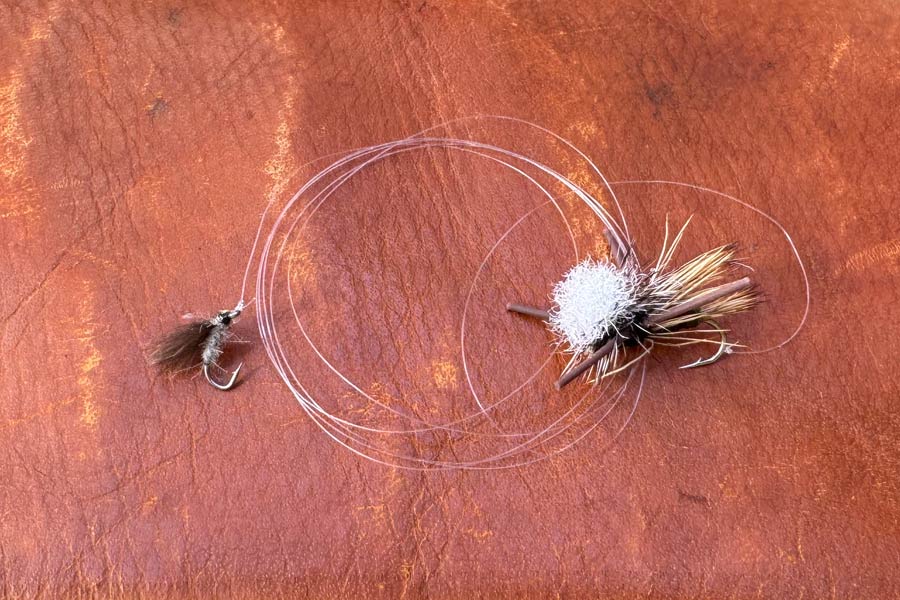
A dry-dropper setup—with a visible dry fly and a subtle emerger pattern—works well for detecting strikes. Photo by Phil Monahan
Tips for Fishing Emerger Patterns (Presentation & Rigging)
Presenting an emerger fly requires a few adjustments, since these flies sit low in the water and can be hard to see. Use these tips to fish emerger patterns effectively:
- Dry-Dropper Rig: Pair a buoyant, visible dry fly with a trailing emerger, attached 12–18 inches off the bend of a larger dry fly. For example, you might use a Parachute Adams and attach a BWO emerger or unweighted nymph behind it. The dry fly lets you track the drift; if you see a trout rise near your dry or the dry twitches, set the hook—it may have taken the emerger. This two-fly setup covers both the adult and emerger stages and greatly improves your odds.
- Dead Drift in the Film: Fish an emerger much like a dry fly, ensuring a drag-free drift so it behaves naturally. The goal is to have your emerger ride in or just below the surface film. Don’t apply floatant to the emerger, except maybe to the wing or hackle if you want it semi-buoyant. If you notice a subtle swirl, dimple, or any movement near where you think your fly is, lift the rod to set the hook.
- Use Soft Hackles & Wet Flies: Not all emergers look like floating dry flies; some are essentially unweighted wet flies that imitate nymphs ascending to hatch. Swinging a Soft Hackle fly in the current is a deadly way to mimic emerging caddisflies or mayflies. Cast across and downstream, and then let the Soft Hackle swing in the current just under the surface, where it will flutter like an emerging pupa. Trout often strike at the end of the swing or on a slight twitch. This technique is a great way to cover water when you suspect trout are taking emergers but you can’t target a specific rising fish.
- Match the Hatch: Even with emergers, you should try to match the prevalent insect in size and general color. If tiny BWOs are hatching, a size 18–20 olive emerger (like a Barr’s Emerger or RS2) is a good choice; for caddisflies, a caddis pupa or emerger pattern in the appropriate size will work. Luckily, there’s a lot of variation in struggling insects, so a “close enough” imitation often works. Patterns with trailing shucks, half-out wings, or soft hackle fibers give a great impression of an emerger. Carry a few emerger patterns for each major hatch; they can save the day when standard dry flies fail.
- Stealthy Presentation: Because emerger fishing often targets wary fish in slower water, use longer, finer leaders and a gentle presentation. Land your casts with minimal disturbance. An emerger drifting naturally in the film is very convincing, but not if your line lands on top of the fish. Approach rising trout with caution, and present the fly a bit upstream so it drifts down into the trout’s feeding zone. If fish are just barely breaking the surface, they’re likely looking up through a narrow window, so accuracy is important too. A well-presented emerger right in a trout’s feeding lane is hard to resist.
By understanding trout behavior and the role of emergers, you’ll know when a low-riding emerger fly is the best choice. During hatches, watch the water carefully and take note of how fish are feeding. If you see subtle rises, insects in the air but few on the water, or trout ignoring your dun imitations, tie on an emerger.
